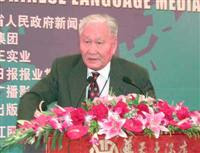(This article is being submitted to a number of major US papers)
People with a sense of decency abhor theocracy and terror, and especially the kind of theocracy to which the Islamist jihadists aspire and the terror they practice that killed 2,992 innocent people on September 11, 2001.
Yet some of these same decent people romanticize a terrorist theocracy as Shangri-La, an old Tibet that was supposed to be a pristine, and “wide open spaces of an unspoiled environment”, “a society dedicated to peace and harmony,” where people “enjoy freedom and contentment” as the Dalai Lama himself has claimed.
But the old Tibet was nothing of the sort. It was a theocracy based on serfdom, much like medieval feudal Europe. The arable land was organized into manorial estates owned by secular landlords, the monasteries, or the local government (Gasha) and worked by serfs. The Dalai Lama, as a leader of the Gelugpa sect, wielded supreme power.
There were also a small number of subsistence farmers, the free peasants, and merchants and small traders. There also were slaves, usually domestic servants who owned nothing.
The majority of the rural population were serfs, who were under a lifetime bondage to work the lord’s land without compensation, to repair his house, transport his crops, and collect his firewood. They were expected to provide carrying animals and transportation on demand. Their masters told them what crops to grow and what animals to raise. They could not get married without the consent of their lord.
When a serf was caught trying to run away, he was subjected to torture, including eye gouging, the pulling out of tongues, hamstringing, and amputation. Torture equipment included handcuffs of all sizes, including small ones for children, instruments for cutting off noses and ears, gouging out eyes, breaking off hands, and hamstringing legs. There were hot brands, whips, and special implements for disemboweling.
These and much more are well documented and beyond dispute. So there were indeed a few who “enjoyed freedom and contentment”, the rich feudal lords, lamas and high-ranking local government officials. The vast majority, the serfs and slaves, led a life of untold misery and suffering.
All this changed after the armed rebellion staged by the Dalai Lama failed in 1959. Theocracy and serfdom were abolished and land reform was carried out. Most of the privileged few are now living in exile and are trying hard to recover their lost paradise. The majority of the working Tibetans enjoy an ever improving material life.
What about religious and cultural life? Beijing strictly differentiates between theocracy based on serfdom and Tibetan Buddhism. The former was abolished and the latter preserved and developed. Over the past dozen years, the Central Government appappropriated some two hundred million yuan rmb (roughly thirty million USD) for the maintenance and renovation of the monasteries. The Jokhang Monastery built in the seventh century, King Songtsen Gampo’s major pilgrimage site, was renovated, so were Samye Monatery built in the eighth century, and the four famous monasteries the Drepung, the Sera, the Ganden, and the Tashi Lhungpo—the seat of the Panchen Lama.
In all, some 1,400 sites of worship have been restored and opened for Tibetan Buddhist believers.
A Tibetan Buddhist Seminary was established in 1983 by the China Buddhist Association. There are also Buddhist scripture classes in monasteries of the various sects, where three thousand Buddhist students are studying. In a word, Buddhists are free to worship in Tibet.
Tibetan medicine is currently an integral part of Chinese traditional medicine. And Tibetan song and dance are flourishing as never before. Tibetan troupes have performed in the United States.
Not least, rapid economic development (annual rate of growth 12 per cent, higher than the national average) has brought improving living conditions, better schools and hospitals.
There are, of course, problems. In the post-cold-war world, national and religious issues have caused many conflicts. And these are sensitive and emotional issues that need to be handled with great care. But the fundamental social issue is being resolved in Tibet.
It would be a good idea for any one who is interested to visit Tibet and see for him(her)self.
没有评论:
发表评论